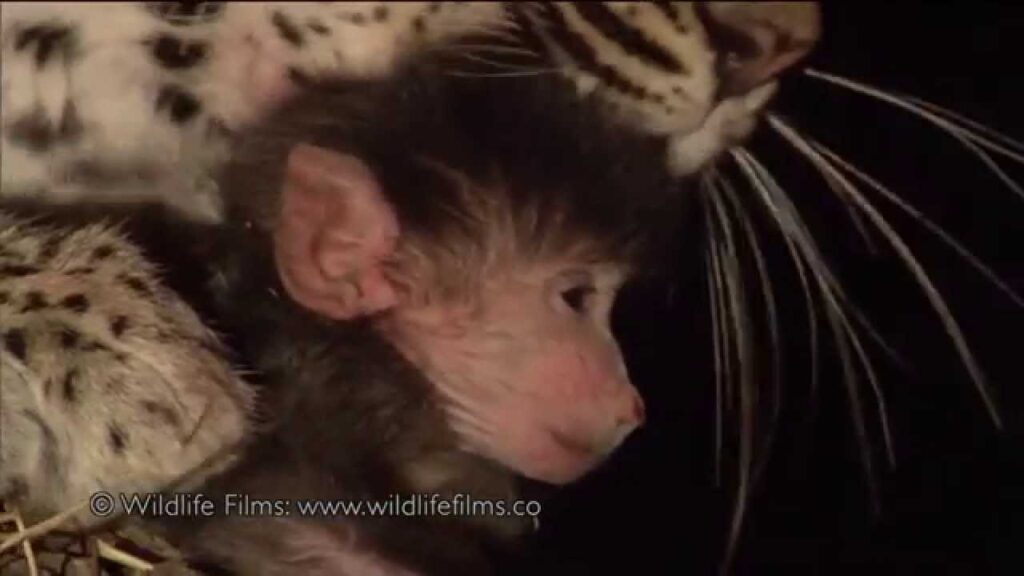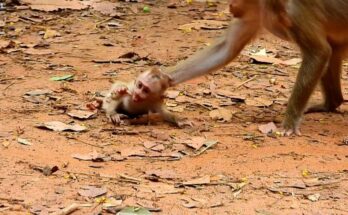In the wild, the interactions between predator and prey typically follow a well-worn pattern—often ending in a tragic inevitability. Yet, sometimes nature delivers moments so unexpected, so deeply moving, that they challenge everything we assume about survival instincts.
One such extraordinary scene unfolded on the African savanna when a young leopard crossed paths with a vulnerable baby baboon. What began as a routine hunt transformed into an encounter filled with tension, tenderness, and an astonishing glimpse into the emotional depth of wildlife behavior.
The leopard had stalked a troop of baboons as they foraged on the ground. When panic erupted among them, a mother baboon was caught in the chase and killed. Her tiny infant, too young to understand its peril, clung desperately to her lifeless form—an all-too-common casualty in the merciless cycle of predator and prey.

But then, the expected outcome took a remarkable turn.
Rather than moving on, the leopard paused, seemingly perplexed by the infant’s vulnerability. The baby baboon, weak and confused, called out softly, unaware of the danger it faced. Muscles tense, the leopard approached—not in aggression, but with an inexplicable curiosity. The moment stretched on, as predator and orphaned infant made silent contact.
And then, against all natural instincts, the leopard picked up the baby—not with the crushing grip of a predator, but with the delicate care of a mother carrying her cub. Climbing into the safety of a tree, the big cat cradled the baboon close, watching over it with an almost protective stance. No hunger. No violence. Only a quiet, inexplicable vigil.
Witnesses, including experienced wildlife photographers, were left in awe as the leopard continued to guard the infant, even chasing off scavengers. Though the baby baboon ultimately did not survive—likely due to shock and exposure—the encounter itself remains a powerful reminder that even the fiercest predators can demonstrate moments of extraordinary compassion.
Experts suggest the behavior could stem from maternal instincts triggered by the infant’s cries, confusion, or even a rare emotional curiosity. Regardless of the cause, the event challenges our assumptions about animals acting purely on instinct, raising deeper questions about empathy in the natural world.
In an environment where survival is unforgiving, this fleeting moment of tenderness between a leopard and a baby baboon stands as a rare and moving anomaly. It proves that even in the harshest landscapes, nature still has the capacity to surprise, stir emotion, and tell stories that go far beyond the expected.
